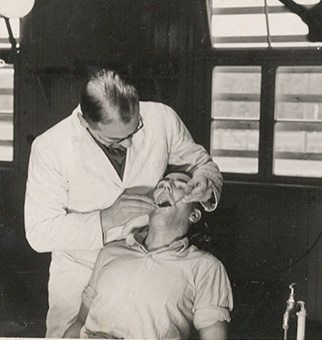WW2 dentist’s spy letters auctioned
Killarney-born practitioner was Colditz POW
Letters, papers and photographs from an Irish officer of the British Army Dental Corps who worked as a spy while a prisoner of war, are to be sold at auction later this month.
Captain Julius Morris Green was born in 1912 and spent his early childhood in Killarney where his father had a dental practice. He studied at the Dental School of the Royal College of Surgeons in Edinburgh and was practising in Glasgow when he joined the Territorial Army in 1939, being posted to the 152 (H) Field Ambulance of the 51 Highland Division.
He was captured with his brigade at St Valery in June 1940 and spent the remainder of the war in a succession of camps. In January 1941, when at Ilag VII (Tittmoning), he was taught the code used to communicate with MI9, the War Office department tasked with aiding resistance fighters in enemy occupied territory and gathering intelligence from British prisoners of war. Being a dentist, he was in an especially good position to carry out such espionage work; as he spent much of his time travelling from camp to camp, treating patients.
However, his misbehaviour – unrelated to his espionage work for which he would have faced certain death if discovered – meant that he eventually received the honour of being confined to Oflag IV-C, better known as Colditz. In its communications with Capt Green, MI9 usually used the conduit of his parents, John and Clara Green of Dunfermline. The War Office department also communicated with Capt Green through a number of coded letters from non-existent people, concocted by operatives at MI9.
One letter, dated 19 April 1943, told Green: “Philippa is still busy with her Red Cross activities, they all work very hard and any slackers are soon rebuked by the others. However Philipps always finds time to dance and drink (in moderation naturally!) with her many friends. Young men flock around and she has a very good time I’m glad to say.” However, the full letter, when decoded, read: “Urgent warn all don’t cooperate Black Front or any Anti Nazi parties all riddled with Nazi agents.”
Bonham’s, the auction house tasked with selling Capt Green’s documents, reports that: “The letters sometimes read like a caricature of a faulty language manual, and had the German censors employed someone with a native command of English they would have immediately spotted that something untoward was going on, a fact of which (as he tells us in his 1971 memoir, From Colditz in Code) Green himself was all too aware. The risks he was running, as a Jewish prisoner-of-war in Nazi hands, hardly bear thinking about.”
One such example of this is included in the lot – a letter to his sister Kathleen on 7 November 1943. In it he writes: “Are you very upset about the beret? Well never mind you couldn’t help it. Here is the solution. It has produced a nice dressing gown. The thing fitted Davidson so he gave me a useful dressing gown for it & I’m delighted. In the end it’s come even. The dressing gown is looked on in the aspect of the extremely useful substitute & the beret covers Davidson’s bald patch.”
Decoded, the letter reads: “Probably only one truck of experimental luboil ever produced here.”
After the war, Capt Green returned to Scotland and worked as a businessman before returning to dentistry. He died in September 1990.
Auction house Bonhams expect the letters to fetch up to £6,000 when the sale is held on 18 June in London. For more details, visit Bonhams’ website by clicking here.

